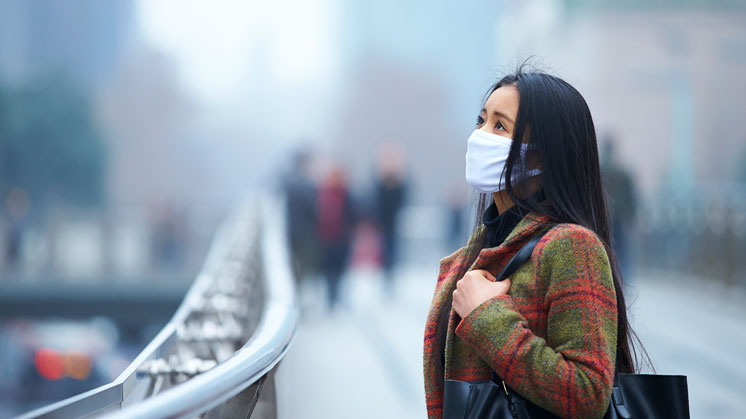Air quality
Is the quality of the air you breathe healthy?
The large cities in China, the USA and the EU exhale 54% of the world's CO2 emissions into the atmosphere, according to the Environmental Protection Agency (EPA). Their nearly 1.38 billion inhabitants have good reason to be concerned about the quality of the air they breathe.

China leads the ranking of countries emitting carbon dioxide (CO2), followed by the USA and the EU member states. This potent greenhouse gas is one of the substances that contributes the most to global warming and climate change, but it is not the only one. Many other compounds, known as climate pollutants, influence the amount of solar energy retained by the Earth... and they cause a wide range of health problems.
How is air quality measured in cities?
At the end of 2017, the European Environment Agency (EEA) and the European Commission launched a new Air Quality Index (AQI), which allows users to check the air quality at more than 2,000 measuring stations across Europe. This index, which provides up-to-date information on air quality in the 33 EEA member countries, includes national profiles ¬as local public administrations have to adapt their measures to take into account factors such as demography, transport infrastructure, etc. These measurements monitor air quality standards and the levels of ozone (O3), nitrogen dioxide (NO2), carbon dioxide (CO2), sulfur dioxide (SO2) and all the pollution generated by particulate matter that can pose serious health risks.
The EPA environment agency is responsible for the index in the United States, while the National Centre for Environmental Monitoring in China (CNEMC) is responsible for compiling, analysing, aggregating and publishing data on the different air indicators in that country.
How do I find out the quality of the air in my city?
On websites, through apps, etc., even Google provides this information. Simply type in air quality followed by the name of the city, to see a bar that indicates the air quality and the main pollutants in a location in real time. This gives the Air Quality Index (AQI) from the monitoring stations distributed across cities and, when there are none at ground level, from satellites.
Monitoring air quality in enclosed spaces

- 1
- 2
- 3
- 4
- 5
- 6
Tobacco smoke aggravates respiratory problems; irritates the eyes; may cause headache, coughing and a sore throat.
Allergens and pollens aggravate respiratory problems and cause coughing, chest tightness, eye irritation and skin rashes.
Carbon monoxide (CO) and nitrogen dioxide (NO2) CO can be fatal in high doses; it causes headache, dizziness and nausea. NO2 can cause eye and throat irritation, suffocation and respiratory infections.
The damp that causes bacteria, fungi and mould to grow indoors can cause respiratory problems, allergies and asthma.
The chemicals in cleaning products can damage the liver, kidneys and nervous system. They also cause headache, nausea, and eye irritation.
Radon gas can enter a building through any openings, no matter how small. It can be harmful to the lungs.
Pay attention to indoor air quality!
People living in urban areas spend 90% of their time indoors, at home or at work. This means that 2.6 billion people are at risk of suffering from sick building syndrome, a term used by the World Health Organization to define diseases caused or stimulated by indoor air pollution.
How does pollution affect health?
Around 95% of the world population lives in areas that do not meet healthy air standards according to the State of Global Air report from the Health Effects Institute. Cities, which are home to more than half of the world's nearly 7.5 billion people, are a breeding ground for pollution, a major mortality factor, which is only surpassed by hypertension, unhealthy diet and smoking.
The main health effects of air pollution are:
 Cardiovascular disorders
Cardiovascular disorders
 Lung conditions
Lung conditions
 Eye irritations
Eye irritations
Health, one of the Sustainable Development Goals
The UN approved the Agenda 2030 on Sustainable Development in 2015. It has 17 Sustainable Development Goals, which range from eliminating poverty to guaranteeing quality education, women's equality, protecting the environment and improving the design of our cities. In terms of health, the UN established Goal 13 to take urgent action to combat climate change and its negative effects, including poor air quality due to pollution and greenhouse gas emissions.




